How to Fix a “Not Working” Laser Pointer?
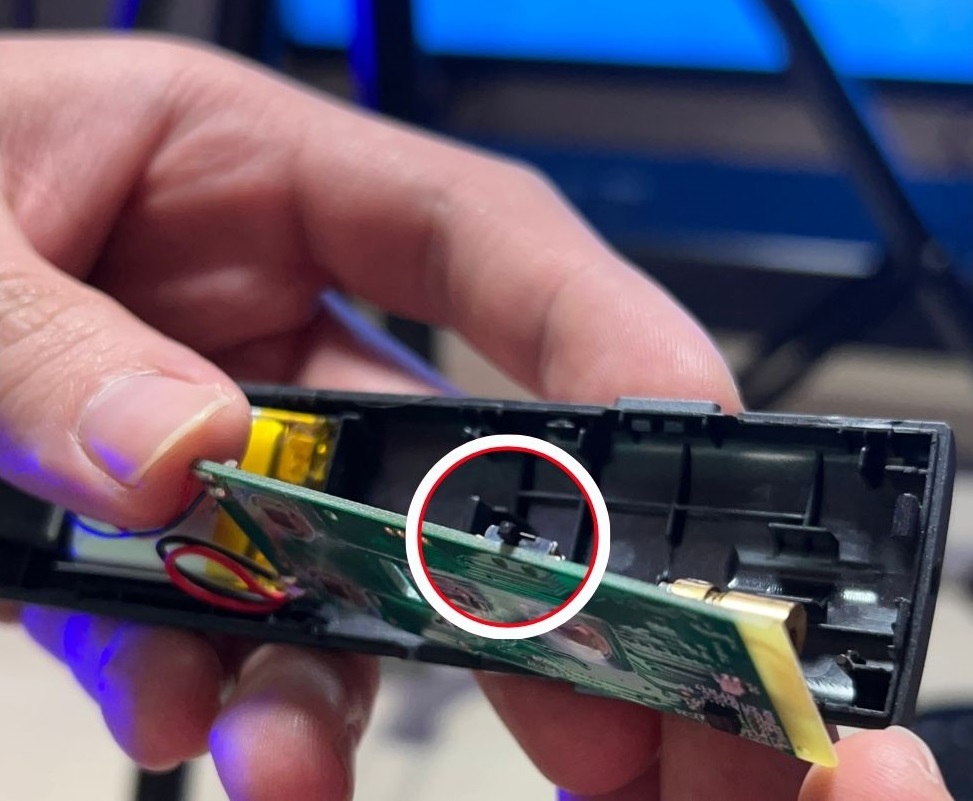
How to Fix
- Basic Troubleshooting: Simple steps like power cycling the laser pointer, removing and replacing batteries, and checking the power switch can resolve common issues. These methods address temporary glitches and power-related problems.
- Internal Inspections and Repairs: If the laser pointer has suffered a fall, internal components like cables or the lens could be damaged. Disassembling the device to re-solder loose cables or clean a blurry lens might be necessary.
In this guide, I’ll explore various solutions for fixing a broken laser pointer, from basic troubleshooting to more advanced internal repairs.
You’ll learn how to address common issues like power glitches, loose internal components, and blurry lenses with practical steps.
Whether it’s a simple battery replacement or a more intricate lens cleaning, this article aims to equip you with effective methods to revive your laser pointer.
Let’s begin.
Quick Navigation
Quick Fixes You Should Try
Turn Off and On Again: Power cycling your laser pointer can resolve issues stemming from temporary software glitches or memory overloads. Just turn off the device, wait a few seconds, and turn it back on. This quick action refreshes the system and can often restore your laser pointer to normal functionality.
Remove the batteries: Removing the batteries can reset your laser pointer, clearing any minor electronic glitches. This step helps to refresh the device’s internal circuitry, potentially restoring its functionality.
Replace the Batteries: Often, the culprit behind a malfunctioning laser pointer is depleted batteries. Replacing old batteries is not just a quick fix but a crucial one. Fresh batteries provide the optimal power supply necessary for the laser’s efficient performance.
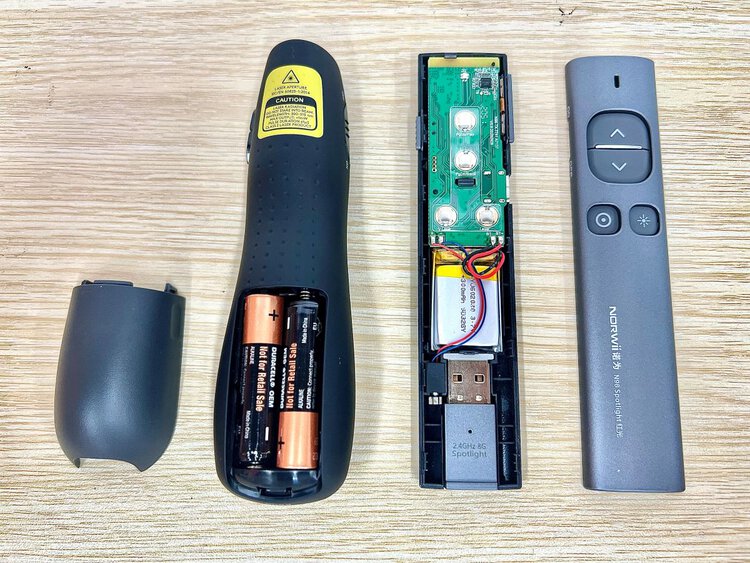
Ensure the Power Switch Still Works

A malfunctioning laser pointer often leads back to a common culprit: the power switch, especially after a fall. Drops can displace or even damage the switch, affecting its ability to work properly.
Give the switch a careful check. Does it seem loose, misaligned, or visibly damaged? Identifying these issues can be the straightforward solution you need, quickly restoring your laser pointer’s functionality.
Loose Cables Inside
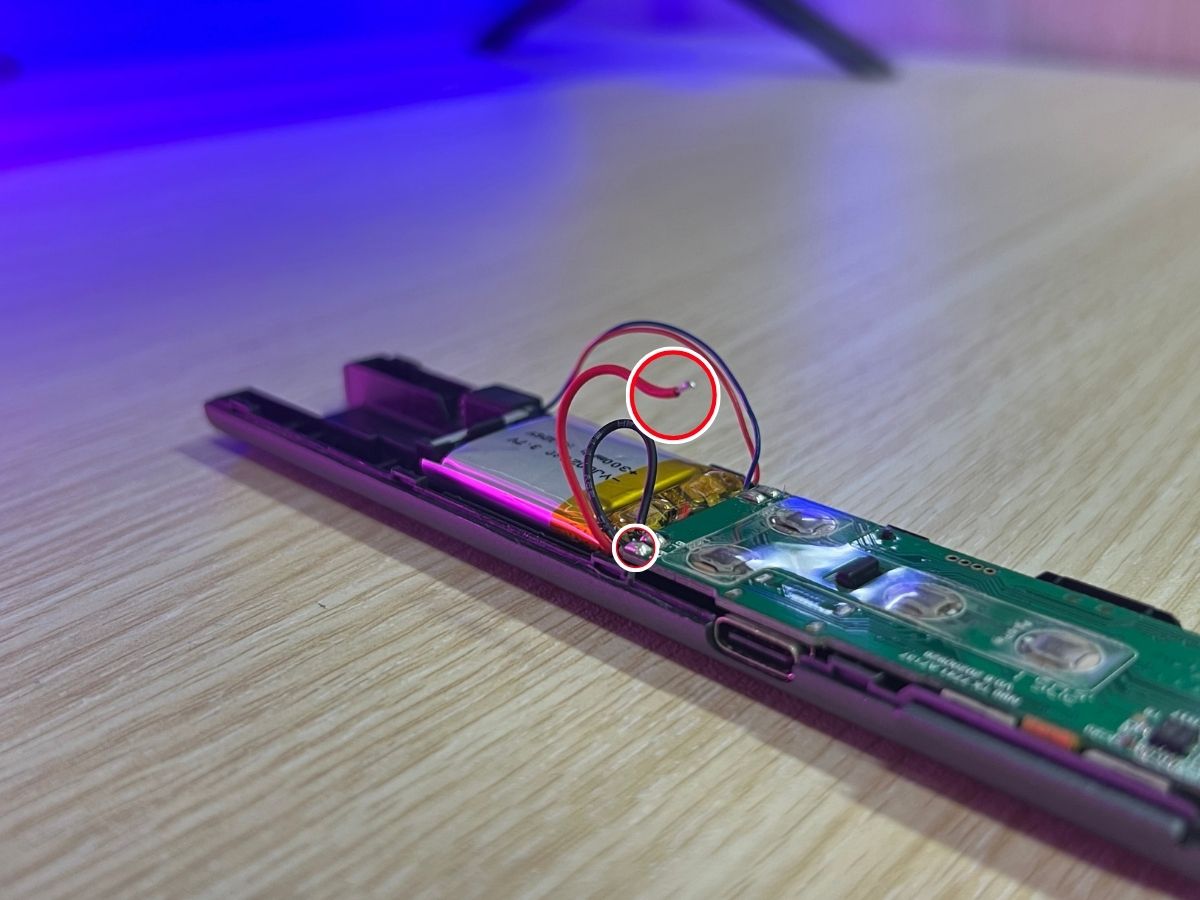
Dropping a laser pointer can often lead to internal cables becoming loose.
To check this, you’ll need to open the pointer. Inside, look for cables that aren’t firmly attached. These usually require re-soldering.
Soldering requires precision, so if you’re not experienced, it’s wise to ask someone who is skilled in electronics repair for help.
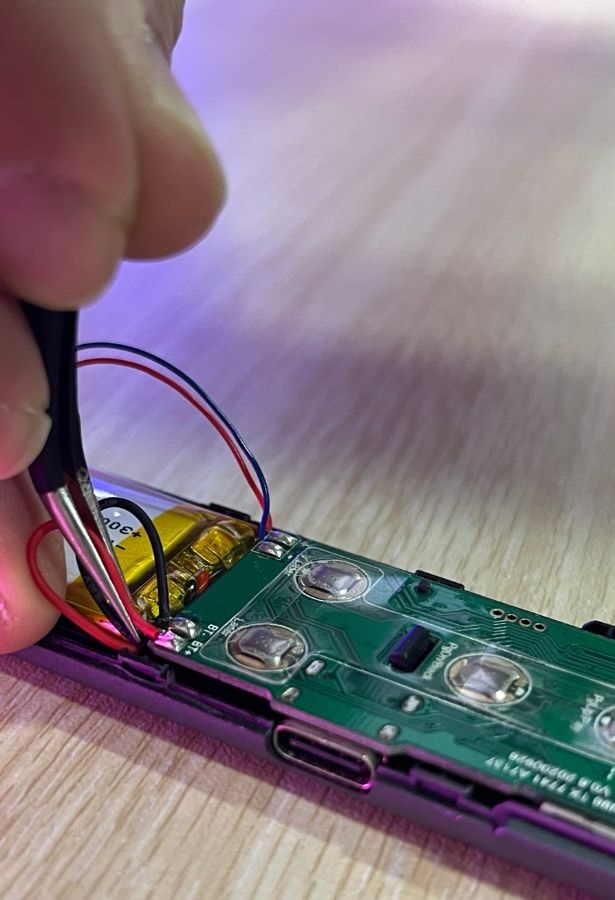
Take my experience as an example: After my Norwii laser pointer fell, a power cable came loose.
Re-soldering it was a bit tricky, but it fixed the problem and my pointer worked perfectly again.
Blurry Laser Lens
If the light of your laser pointer is spread out and isn’t giving a sharp-pointed dot.
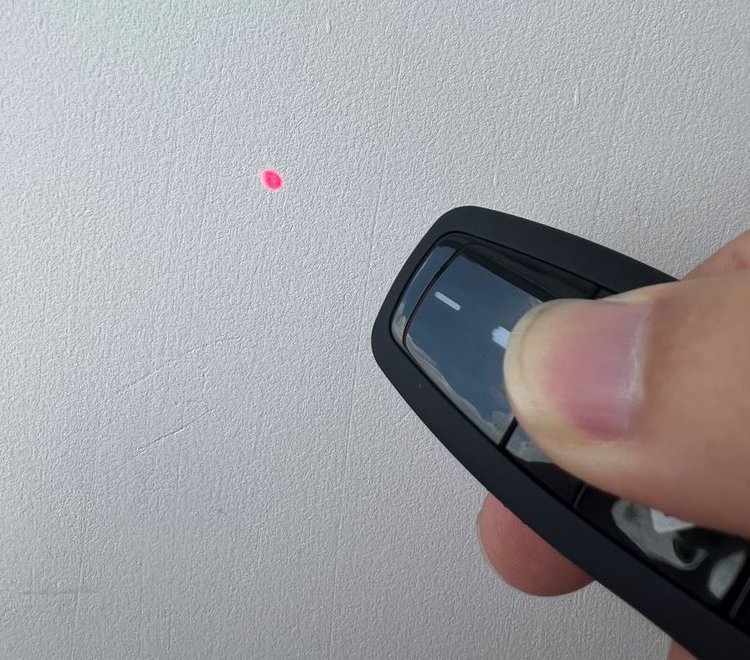
The major cause of a blurry laser lens is dust particles spreading across the internal surface of the lens, getting rid of the dust involves meticulous cleaning to prevent damage.
To clean your laser lens, you will need;
- Lens cleaning wipes
- Air duster can or a turkey baster to shoot out compressed air.
- Cotton swabs
The location of the lens varies depending on the laser pointer model. In some models, the lens is situated inside the casing, requiring disassembly to access it.
In my specific case, the lens was located beneath the circuit board. After opening the laser pointer, I carefully flipped up the circuit board to clean the lens.
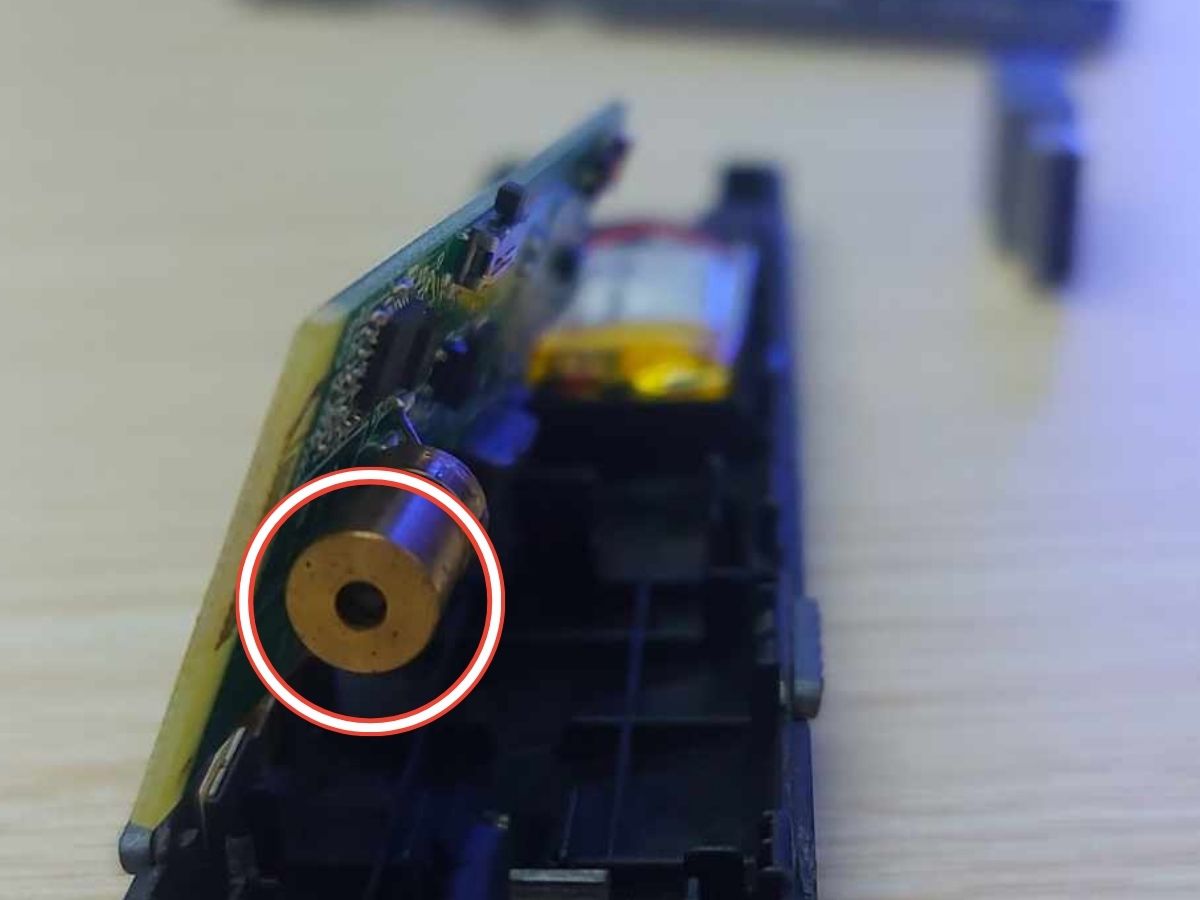
Addressing Dimming Issues in Laser Pointers
When your laser pointer starts to lose its brightness, it could be due to several reasons. Common culprits include dirty lenses, batteries running low, or even a diode that’s either damaged or simply getting old.

If you’re facing a dimming lens issue, tackling it requires a systematic approach.
Start by cleaning the lens; dust and grime can significantly reduce brightness.
Next, try replacing the batteries. If these steps don’t help, the problem might lie in the diode itself, which can wear out over time.
For more detailed insights on how to diagnose and fix a dimming laser pointer, including tips on lens cleaning and diode checks, I’ve compiled a comprehensive guide.
The article covers all the essential steps and considerations to restore your laser pointer’s brightness effectively.
Using Laser Pointers with LED and LCD Screens
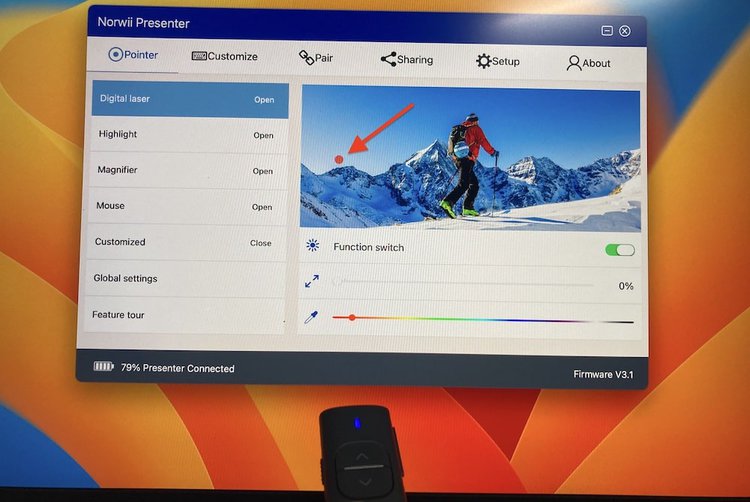
It’s important to note that regular laser pointers are not effective on LED or LCD screens in general. This includes screens like those on modern TVs and computer monitors.
The issue lies in the compatibility of standard laser pointers with the reflective surfaces of these screens.
For presentations or interactions involving LED or LCD screens, you need a laser pointer designed specifically for this purpose.
For example, the Norwii N96 is a model that works excellently with such screens. It’s engineered to be visible on digital displays, ensuring your audience can easily see the pointer on TV and monitor screens.
- [Green Light Pointer] The wireless presentation clicker has a strong green light pointer that is 8x...
- [Long Control Range] With a wireless control range of 328 feet, you can move around freely and be...
- [PowerPoint Hyperlink Compatible] This presentation remote control can help you select and open...
(Paid Link.)
Considering a New Laser Pointer
Considering a New Laser PointerFor those exploring options for a new laser pointer, I have compiled an informative article from my experiences with various models, including the Logitech R400, R500, and R800.

The comprehensive guide discusses the Logitech laser pointer features, specifications, and overall performance. It’s designed to assist you in identifying the laser pointer that best aligns with your requirements and preferences.
Diving in and you will be provided with valuable insights, making your decision process smoother and more informed. Whether for professional presentations or personal use, choosing the right laser pointer can significantly enhance your experience.
Tai “Ty” Luu, an Electronics Engineering graduate from Sheridan College, is a passionate technical editor with a deep love for technology and gaming. He constantly seeks new challenges to expand his expertise in the tech and gaming fields.


